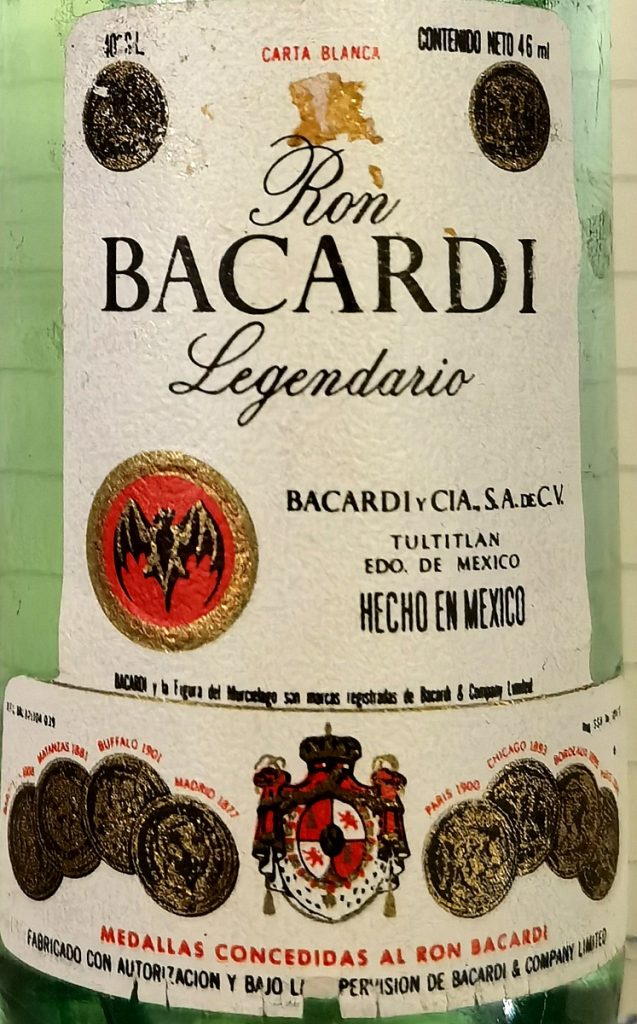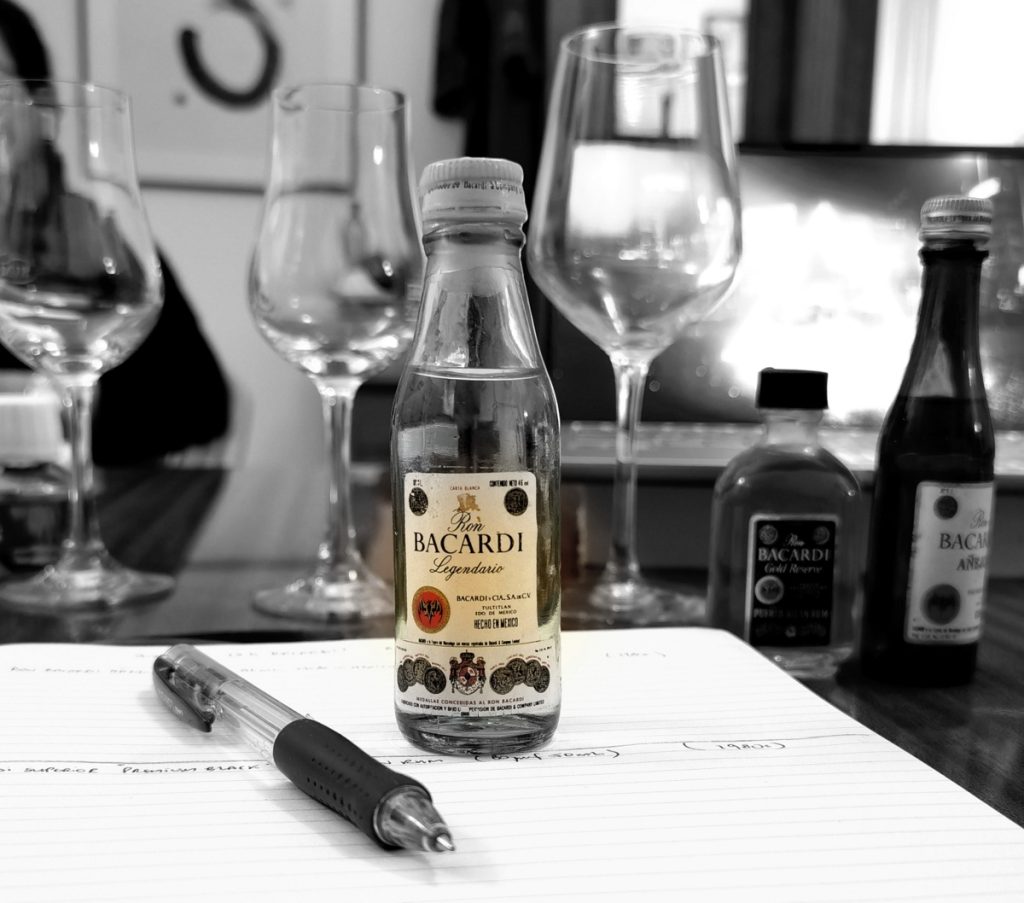Rumaniacs Review #150 | 1002
This series of Rumaniacs reviews (R-149 to R-154) we’ll be looking at over the next week or so, is a set of Bacardis from the 1970s to the 1990s that were all part of a small collection I picked up, spanning three decades and made in Mexico and Puerto Rico – they display something of what rums from that bygone era was like, and the final review will have a series of notes summing up what few conclusions we may be able to draw.
Dating this one was interesting. The Legendario Carta Blanca brand (sometimes just called Carta Blanca) has been made since at least the 1920s, and it takes a detailed look at the label, place of make and the changes in the bat logo to establish a rough estimate of when it was made. Here we know that the bottom line has to be 1961 since that was when the Tultitlan factory in Mexico was completed and in 2006 the name Carta Blanca was globally discontinued. Too, the bat logo on this bottle was changed in 2002, so…
One collector suggested it was perhaps made in the 1990s but I tracked down a label precisely matching this one that seemed, with the notes I have from the seller, to place it more conclusively from the 1970s, and so unless someone has better information, I’ll leave it there (note that the labels changed almost not at all during those decades).
 The Legendario Carta Blanca is a blend of light and heavy bodied rums, aged between one and two years then charcoal filtered to remove the colour – it is therefore a direct descendant of the original rum Bacardi made in the 19th century, which established the brand. Nowadays, it’s been rebranded, and is called the Superior.
The Legendario Carta Blanca is a blend of light and heavy bodied rums, aged between one and two years then charcoal filtered to remove the colour – it is therefore a direct descendant of the original rum Bacardi made in the 19th century, which established the brand. Nowadays, it’s been rebranded, and is called the Superior.
Strength – 40%
Colour – White
Label Notes – “Carta Blanca”, “Tultitlan Edo. De Mexico”
Nose – Almost nothing here, less than the 1970s Superior we looked at before (R-149), and that one, while decent, was no standout. Starts off with some brine and olives, to the point where we feel some mescal has sneaked its way in here (very much like the Limitada Oaxaca, just weaker). Noy sweet at all – oily, slightly meaty, opens up into some nice cherries and flowers.
Palate – By the time we get to taste, the brine is starting to disappear and the rum transforms into something sweeter, lighter with a bit of light fruits (pears, red cashews), sugar water and very light melons and citrus, though you have to strain to get that much/
Finish – A little sharp, briny, the slightest bite of some woodiness, coconuts shavings.
Thoughts – This one might benefit from some time and patience, because it develops better once left to open for a while. That said, nailing it down is not easy because it’s faint enough that the flavours kind of run together into a miscellaneous mishmash. Disappointing.
(73/100)
Other Notes
- The city of Tultitlan’s name shows it’s a very old part of Mexico (the name is Toltec). It is now a northern suburb of Mexico City and was built by a famous firm of architects Ludwig Mies van der Rohe and Felix Candela between 1958 and 1961 (van der Rohe designed the corporate Office Building, and Felix Candela designed bottling plant and distillery cellars). The fact that it was constructed so long ago suggests that the family was already expanding (and hedging its bets) way before they were exiled from Cuba after the Revolution.
